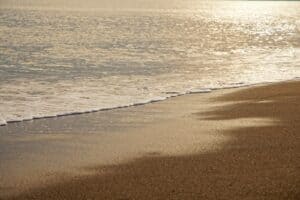If you’re like me, planning the perfect vacation is all about timing. And when it comes to Phuket, timing can make all the difference. In this article, we’ll delve into when is the best time to go to Phuket.
Phuket, Thailand’s largest island, is a popular destination year-round. But depending on what you’re looking for – be it sun-soaked beaches, vibrant festivals, or budget-friendly travel – the “best” time to go can vary. Stick around as we break down the island’s seasons and what each one has to offer.
When Is the Best Time to Go to Phuket: Seasonal Weather in Phuket
Understanding the seasonal weather in Phuket plays a critical role in choosing an ideal vacation time. I’ll dive into each of the seasons and what you can expect.
Phuket’s tropical weather revolves around three major seasons:
- Hot Season (March to early May)
- Rainy Season (mid May to October)
- Cool Season (November to February)
During the Hot Season, temperatures can rise up to 35 degrees Celsius. Phuket Island graces its visitors with beautiful sunny days and a hot atmosphere that’s perfect for those who love basking under the sun. Tourists should, however, be well-prepared for the heat — sunscreen, hats, and lightweight clothing are essentials during this time.
The Rainy Season in Phuket is a part of the South Asian Monsoon season. Now, don’t let the term “rainy” deter you. Despite the intermittent rain showers, it’s often sunny for a majority of the day. The rainfall tends to be heavy but brief, mostly occurring in late afternoon or night. Beautiful bursts of greenery emerge during this season, offering a lush landscape that’s a refreshing sight to the eyes.

Lastly, the Cool Season doesn’t imply Phuket turns into a winter wonderland. The temperatures average between 24 to 32 degrees Celsius. This period is characterized by the clearest skies and calmest seas, with minimal rainfall. It’s no wonder why it’s widely recognized as the best time to visit Phuket.
High Season: November to February
When we think of the absolute best time to step foot on the alluring island of Phuket, the Cool Season, also celebrated as the High Season, naturally comes into focus. Spanning the months from November to February, it epitomizes the very essence of “tropical paradise”. I’ve often found myself utterly entranced by its charms, with clear skies and calm seas oscillating between a rich blue and a breathtaking emerald.
In my experience, one does not simply visit Phuket during the High Season – one becomes imbued with its atmosphere. Daytime temperatures typically hover around a very comfortable 82°F (28°C), making days both pleasurable and invigorating. The nights are not left behind; they can cool down with a delightful 70°F (20°C), offering the perfect conditions to explore Phuket’s vibrant nightlife. Near-zero rainfall greatly reduces the chance of wet spells, ensuring outdoor plans remain mostly unhindered.
The High Season is also typically teeming with celebrations, events, and festivities. Be it live DJ parties on the bustling Patong Beach or the tranquility of Wat Chalong with its evening prayers, Phuket has something to offer everyone.

However, it’s essential to keep in mind that the demand for accommodations and amenities soar during the High Season. But don’t let that discourage you. With a little forward-thinking and planning, the High Season can provide an unforgettable experience. Welcome to the best version of Thailand’s largest island!
Bear in mind, though, every season brings its unique appeal and experience. Let’s continue on this journey into the heart of Phuket’s climatic personality, as we explore the next season – the Hot Season.
Low Season: May to October
May to October marks the Low Season in Phuket. Known also as the Green or Rainy Season, it’s marked by heavier rainfall and the island seems to breathe once more. Don’t be fooled by the term ‘rainy’ – it doesn’t rain all day or even every day. Rains are usually heavy but short, leaving plenty of sunny spells.
There are several advantages to visiting Phuket during the Low Season:
- Lower prices: Accommodation, flights, and even local businesses drop their prices during this time. You can bag great discounts on hotels, villas, and resorts.
- Less crowded: The island is less crowded, resulting in a more tranquility. The beaches, restaurants, and attractions feel more laid-back and relaxed.
But, there’s also a downside. Ocean conditions can be rough. It’s not always safe for swimming or boat trips. The likelihood of event cancellations due to weather conditions is higher as well.

One interesting feature of the Low Season is the presence of sea turtles. During this time, sea turtles come to ashore to nest. If you’re a marine life enthusiast, it’s an amazing opportunity to witness this spectacle. Another key perk is the lush greenery. Rains transform the landscapes into shades of bright vibrant green, promising picture-perfect views.
Despite the frequent bouts of rain, the Low Season has many rewards for the adventurous traveler. You can take part in indoor activities when it rains, such as Thai cooking classes and spa treatments. When the sun is out, pristine beaches await your exploration and the ocean calls out to surfers.
Shoulder Season: March to April
Just between the dry High Season and the more unpredictable Low Season, lays the so-called Shoulder Season. It’s a transitional period happening in March and April. This time of year in Phuket can offer pleasant surprises for travelers who want to experience a mix of high and low seasons with more moderate weather and crowd conditions.
First off, let’s talk about the weather. The average temperature during these two months ranges from 28 to 33 degrees Celsius (82 to 91 Fahrenheit). While there’s an increased chance of scattered showers when compared to dry season, it’s far less common than in Low Season. The impressive thing about the Shoulder Season is that I’ve found that it tends to shower at night, meaning daytime activities aren’t as disrupted as you might think.
Another big benefit of visiting during the Shoulder Season is the balanced mix of tourists. It’s not as crowded as High Season, yet you certainly won’t feel the isolation of Low Season either. It’s the perfect balance of bustle and tranquility.
Big Fact: Easter holidays typically fall within this period, attracting families from different parts of the globe. It’s something to be aware of when booking travel and accommodations.
Speaking of accommodations, prices tend to be moderate during the Shoulder Season as well. It’s not the bargain you’d get in Low Season but significantly less pricey than in High Season. For budget-conscious travelers, this is a worthy consideration.
Also, note that the ocean conditions during this time are relatively calm, making it ideal for various water activities, including swimming, snorkeling, and boat tours.
On the wildlife end, March and April provide an interesting opportunity to observe various species of birds during their migration periods. Also, with the bloom of many wildflowers, it’s a true delight for nature and photography fans alike.
The Shoulder Season, though sometimes overlooked, is worth a hard look for those who want to experience the best of both worlds – a blend of high and low seasons in Phuket.
Best Time for Sun-Soaked Beaches
Want to drape yourself on sun-kissed beaches in Phuket? If sand between your toes, golden rays dancing on the azure waters and captivating beach vibes are what you’re after, you’ll find this part particularly helpful.
November to February marks the Prime Beach Season in Phuket. It’s the time when you’re least likely to experience rainfall. Clear blue skies greet you with temperatures averaging at 24-32 degrees Celsius (75-90 Fahrenheit). Beach-goers find it just right for lazing on the sand and taking the occasional plunge into the welcoming Andaman Sea.
An added bonus for trippers during this period is the Phuket King’s Cup Regatta that takes place in December. It’s a vibrant affair, attracting enthusiastic yachters from around the globe. With this, the already buzzing Kata Beach comes to life in a unique way.
From nightlife lovers to peace seekers, the beaches transform to accommodate everyone’s fancy. Patong Beach, lauded for its energetic nightlife, becomes an icon of festivity. Simultaneously, more secluded spots like Mai Khao Beach offer tranquil strips of sand that remain undisturbed throughout this season.
During the Prime Beach Season, you’ll also notice a surge in underwater activities. The sea’s stability and lucidity provide ideal conditions for snorkeling and diving. Vibrantly colored coral reefs await exploration, and exotic marine life is observable in its natural habitat.
Yet, while the Prime Beach Season is Phuket’s proverbial guest magnet, it’s not all roses. You’ll find accommodation prices soaring during these months. So if budget is a concern, advance booking is advised. You’d also be dealing with larger crowds as this is the time when Phuket sees an influx of tourists. But if it’s the bustling Phuket life under the best weather conditions that you want to experience, it’s all worth it.
As we delve further into the “when is the best time to go to Phuket” narrative, let’s explore what the other seasons offer to discerning travelers like us.
Best Time for Vibrant Festivals
If you’re fascinated by Phuket’s rich cultural heritage, the best time to visit is during the various vibrant festivals. For real cultural immersion, join the locals and celebrate these festivals. Here, I’ll talk about some of Phuket’s most important festivities that shouldn’t be missed.
First on my list is the Vegetarian Festival, celebrated in September or October, depending on the lunar calendar. This nine-day Taoist celebration means Phuket Town’s streets are brimming with processions, tasty vegetarian street food and ceremonial events. The festival is both a fascinating and shocking sight due to its extreme rituals. Tourists should expect to see devout followers piercing their bodies with an assortment of items. It’s an intense cultural experience. I’d recommend checking the exact dates as it changes year by year.
The second must-see Phuket event is Loy Krathong. This festival takes place on the full moon of the 12th Thai month, typically November. The Thais celebrate this ‘Festival of Light’ by floating a krathong, a small decorated basket, on a body of water. It’s a wonderfully photogenic spectacle and an emotional event for locals as they release their krathong to cast away sins and make wishes.
Last but not least is Songkran, the Thai New Year’s festival. Celebrated in mid-April, Songkran is notorious for its citywide water fights. It’s a time when locals and tourists alike cool off from the intense heat with playful water battles in the streets of Phuket.
With all these events, the increased festival accommodation rates and minimal availability necessitate early booking. So, if you’re planning to experience one of these vibrant cultural festivals, start planning your trip well in advance to secure your spot and get the best deals. Remember, there’s no wrong time to visit Phuket – it all depends on what you want to experience during your visit.
Best Time for Budget-Friendly Travel
One of the great things about using a bit of strategy in planning your holiday is how much money you can end up saving. The age-old choice of when to book can heavily sway your travel budget. Visiting during the right time can offer savings on accommodations, activities and airfare. So, let’s delve into the best time to visit Phuket on a budget.
The Low Season a.k.a Rainy Season tends to create a more budget-friendly environment for tourists. Running from May to October, the benefits are multifold, including lower hotel rates, reduced crowds, and cheaper flights. Another upside of this season is the lush tropical vegetation, flourishing in full swing after the rain.
Be prepared for rain showers during this period, but don’t let that put a damper on your plans. After all, fluctuations in weather are part of the tropical experience, and rainfall in Phuket is usually brief and intense rather than prolonged. In fact, many travelers find the combination of warm rain and tropical heat uniquely beautiful.
It’s worth noting that because the rainfall is higher, some marine activities may be off-limits due to sea safety. Phuket’s west coast beaches can have rip currents. So, if you’re looking to partake in water sports or island hopping, this might not be the best time.
However, if you need a break from the beaches, this is a great time to explore the many indoor activities and cultural attractions Phuket has to offer, like its multitude of temples, shopping centers, and spas. Because it’s the low season, you’ll be less likely to encounter crowded tourist spots, giving you a more personal experience with Phuket.
Finally, just like any travel tip, I would suggest you evaluate your needs and priorities before deciding when to travel. Some are willing to trade perfect weather for a less crowded, more cost-efficient trip. It all depends on you and the kind of vacation you envision.
So, you’ve got the scoop on the best times to visit Phuket. Whether you’re a beach bum eager to soak up the sun during the Prime Beach Season, a culture enthusiast planning to partake in vibrant festivals, or a savvy traveler looking to save some bucks during the Low Season, Phuket has something for everyone. Remember, early booking is key during festival times, and exploring indoor activities and cultural attractions is a great alternative during the Low Season. Ultimately, it’s all about what suits your travel style and budget the best. So go ahead, plan that dream trip to Phuket, and make the most of this tropical paradise.

